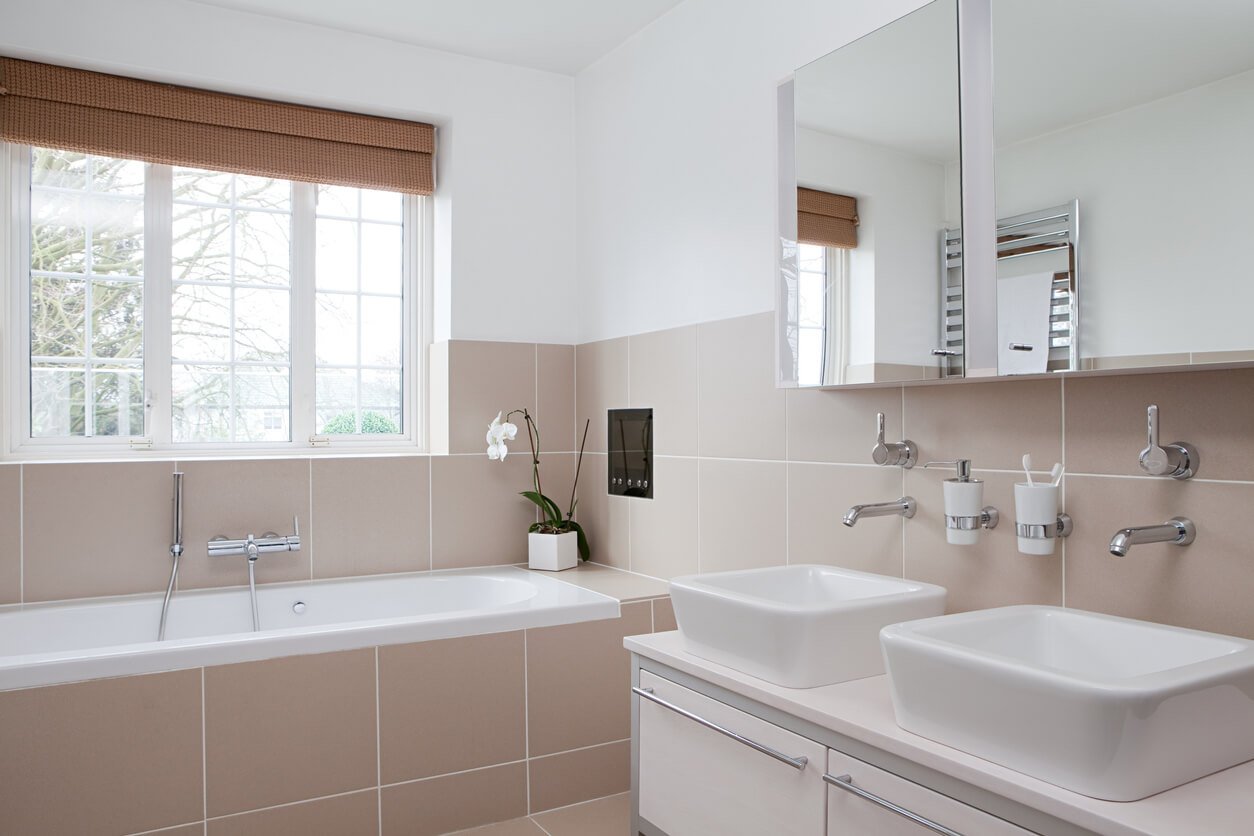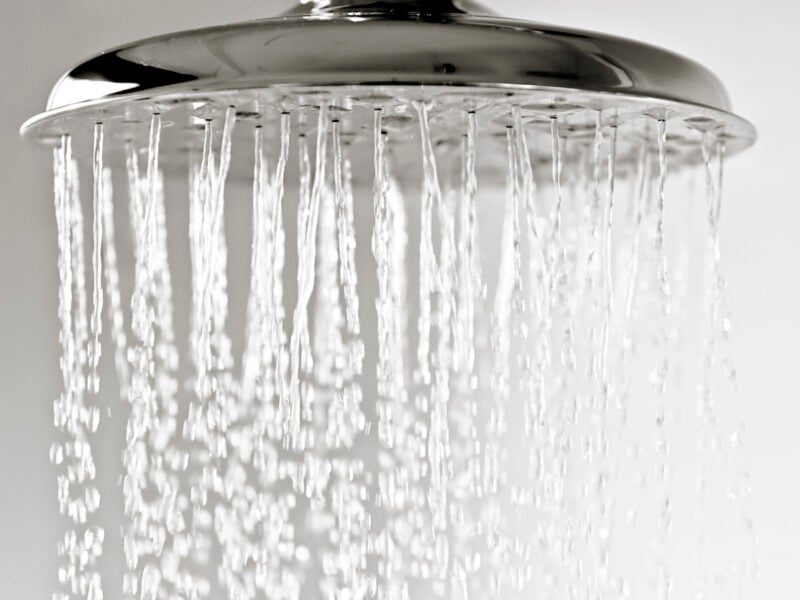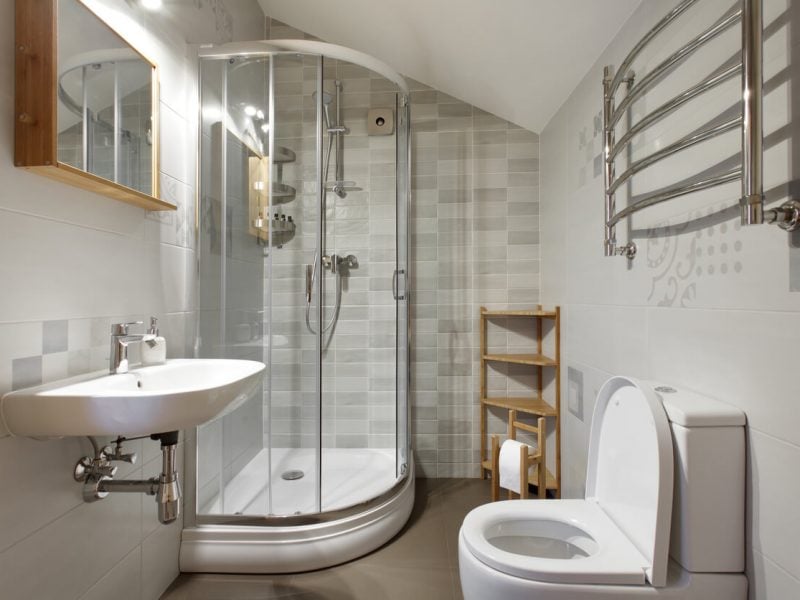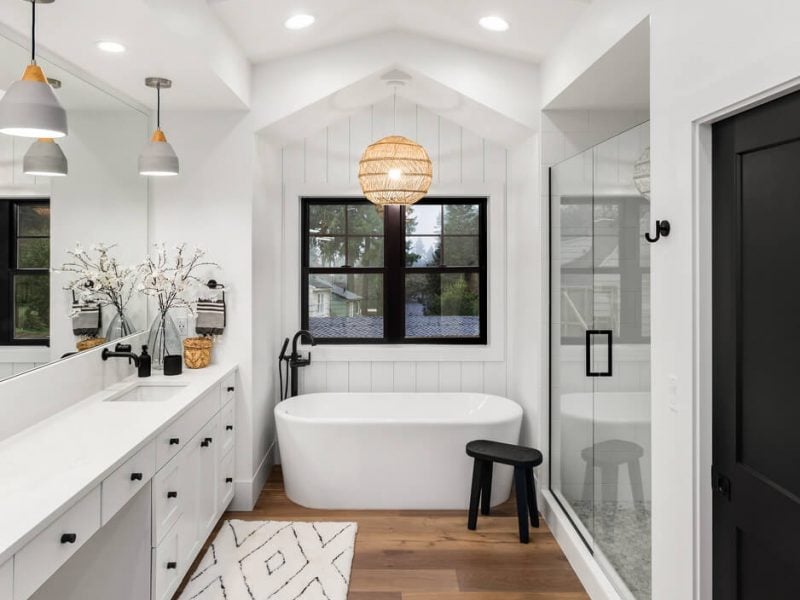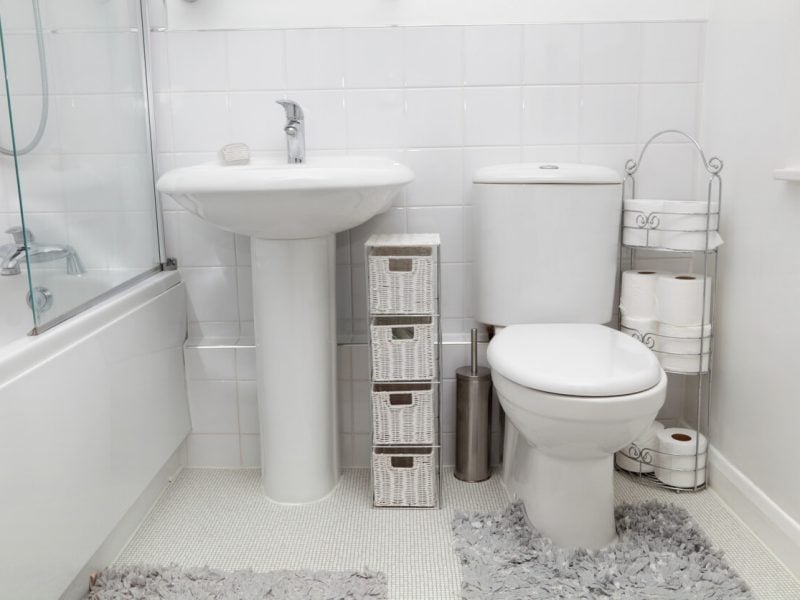Half Tiled Bathroom Ideas that Inspire
When it comes to tiling your bathroom, you’re likely to find yourself in the position of having to decide between half-tiled walls versus full-tiled walls.
If you’re wondering ‘should I tile the walls from floor to ceiling, or only tile the wet areas?’ then we’re here to give you some ideas and inspiration. A good starting point is to consider the overall style of your bathroom; are you opting for a contemporary design or something a little more traditional? While a fully-tiled wall lends itself more towards a modern decor, using tiles sparingly in certain sections of your bathroom has the flexibility of complementing both a traditional decor and a contemporary style of interior.
Tiles in bathroom design have generally been used as a way of preventing water damage to the walls and will usually be fixed to the wet areas of the bathroom which includes in and around shower enclosures, the bath’s surrounding walls, and the space behind the basin. Alongside their functionality, tiles open up the possibility of having more creative freedom and more flexibility in how you design your bathroom.
Half-Tiled or Fully-Tiled?
A fully-tiled bathroom will feature floor-to-ceiling tiles, creating a sleek, contemporary finish. This modern style of interior design will make your bathroom feel more spacious as the tiles will allow for both natural and artificial lighting to bounce off the surfaces. Another benefit of this style is that you won’t need to purchase and fit skirting boards; the tiles can be finished flush to the floor’s surface, saving time, reducing the labour cost, and, as no painting is required, you won’t need to worry about skimming the walls.
Of course, a fully-tiled bathroom does come with its downsides. Having tiles floor-to-ceiling will, in most cases, cost more than a half-tiled bathroom due to the cost of the tiles themselves. You can always opt for more affordable tiles, however, they’re almost guaranteed to be less durable and won’t fit as well as higher quality tiles. Plus, if they are damaged, you’ll have additional labour costs. Another downside is that fully-tiled bathroom walls will entail completely redecorating your existing bathroom, something which is costly, time-consuming, and inconvenient.
Unlike fully-tiled bathrooms, a half-tiled bathroom will only feature tiling in the room’s wet areas, such as inside the shower enclosures and around baths, toilets, and basins. The remaining sections of the walls which aren’t likely to come into contact with water can then be painted or wallpapered.
The main advantage of opting for a part-tiled decor is that the material cost is a whole lot less because you’ll need a smaller number of tiles for the bathroom than if you were planning on tiling the room in full. You’ll also have more freedom in terms of the style of the room; you can go down a traditional route with dark colours or an ornate wallpaper or, alternately, you can paint the walls a neutral colour which complements the tiles for a clean, modern aesthetic.
When compared with full-tiled bathrooms, there are a couple of challenges when it comes to the renovation. First of all, you’ll have the labour cost of prepping your walls to ensure an even coverage when you begin applying the paint. That being said, if your bathroom is on the smaller side, this is unlikely to be too time-consuming and expensive.
The Benefits of Half-Tiled Bathrooms
We’ve outlined a few of the key benefits which come with part-tiling your bathroom.
Modern Aesthetic
Firstly, the versatility of half-tiling your bathroom means that you can achieve a modern decor if you’re leaning towards a contemporary style. By complementing neutral coloured tiles or marble tiles with white to off-white paintwork, you’ll be able to create a clean, spacious room that mimics the spa-like airiness of a hotel’s en-suite. Opt for one of our modern bathroom suites to bring your bathroom together; geometric shapes, natural materials, and minimalist touches paired with pristine porcelain tiles will make for a simplistic, functional space.
Fewer Tiles Needed
The material cost of having tiles fitted only in certain areas is far lower when compared with full-tiling bathrooms. As a result, this is a budget-friendly option and means you can even take advantage of the money you’re saving by opting for more expensive feature tiles to create a focal point in your space.
Cheaper
One of the biggest benefits of part-tiling bathrooms is that you’ll see a reduction in material costs when compared with having full-tiled walls. Even the most high-quality, expensive tile for bathroom walls will cost less overall when you only tile half the walls. Having painted sections to complete the room is considerably cheaper than having costly marble tiles floor-to-ceiling and gives you more freedom to express yourself creatively when you’re coming up with ideas for your bathroom decor.
Creative Freedom
With half-tiling comes versatility; you can pair tiles with practically any colour of paintwork and a whole variety of suite items. Whether you’re looking to go down a more traditional route or instead something a little more contemporary, the possibilities really are endless. When only half of your bathroom has tiled walls, you can hang framed artwork around the room to complement a period-inspired style or you can create a statement through a bold colour scheme above the tiling. One of the best ways half-tiling provides greater creative freedom is that once tiled, you can change the paint colour with ease during future renovations without having to worry about taking your bathroom apart entirely.
A Speedier Job
As fewer tiles are required when compared with a full-tiled style, it will take less time to decorate your bathroom walls. This means you can make your dream bathroom a reality a whole lot quicker and spend more time focusing on the minute details of the suite.
FAQs
Here you’ll find our answers to some of the most frequently asked questions which pop up by those reading up on half-tiled bathroom ideas.
Should a bathroom be fully tiled?
There’s no right or wrong answer to this question because how you choose to tile your bathroom is going to come down to personal preference. As we’ve covered, there are pros and cons to both full- and half-tiling. Although fully-tiling your space eliminates the need for skirting boards, as well as making your bathroom easier to clean and more water-resistant, it does come with an increased material cost and less flexibility should you wish to redecorate your bathroom in the future.
How far up should you tile a bathroom wall?
When you’re looking through ideas for tiling your walls, you’ll notice that there’s a range of differing opinions on this topic because, again, this is going to come down to your own personal preference. When you’re opting for a partial coverage with your tiles, aiming for around 90cm in height is around about average. You can then integrate a decorative trim for a traditional aesthetic or you can leave the border with a squared-off, glazed edge for a more modern take on having half-height tiling.
What size tiles are best for a small bathroom?
Larger tiles measuring 60x60cm to 80x80cm will make a small bathroom feel even more confined, while smaller porcelain tiles come with the added burden of excessive grout lines which similarly makes your space feel more restricted. We would recommend opting for medium-sized tiles measuring under 60x60cm, preferably ones with rectified edges and a matching colour of grout to make your tiling flow better around the room.
When you’re decorating a small bathroom, we have a number of ideas to help you make the room seem larger than it truly is. Using rectangular tiles sized around 30x60cm is a good way to give the illusion of having more space; placing them horizontally will make your walls seem wider while placing the tiles vertically will make the room seem taller. If you would rather use square-shaped tiles, lay them in a diagonal pattern to trick the mind into thinking the space is less confined.
What can I use instead of tiles in my bathroom?
While tiles are the most durable option when it comes to decorating your bathroom, there are alternatives available. One technique is using acrylic or PVC shower panels; offering a smooth, seamless look, both of these materials are durable, water-resistant, and easy to clean. Alternately, you could choose to install stainless steel sheets for a modern look. Mounted over concrete, stainless steel is a highly versatile and long-lasting material which can be cut to fit the shape of any shower. If you’re looking for a more simplistic option, using specialised paint which is formulated to be moisture-resistant and easy to wipe down can be used in any bathroom.


